A team of scientists from the National Institute of Water and Atmospheric Research are aboard the research vessel Tangaroa for a six-week voyage to Antarctica.
Their mission is to better understand the ecosystem and ocean physics in the Ross Sea, as well as assess the impacts of climate change.
They will focus on the Ross Sea Marine Protected Area, which is the world's largest at 1.5 million square kilometres - more than five times the size of New Zealand - and protects some of the southern ocean's most productive ecosystems.
It was established five years ago in partnership with the United States, and protects the sea from unregulated fishing and exploitation.
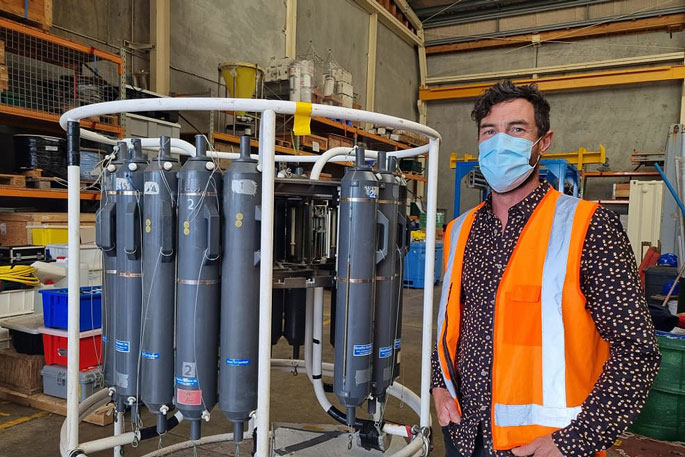 Joshu Mountjoy with a CTD (conductivity, temperature and depth) machine that will be on board the vessel. Photo: RNZ / Lauren Crimp.
Joshu Mountjoy with a CTD (conductivity, temperature and depth) machine that will be on board the vessel. Photo: RNZ / Lauren Crimp.Ocean strategy manager Joshu Mountjoy is leading the voyage. He says it will reveal more information about the marine food chain and climate change impacts.
"This voyage will be the fourth in a series that's collecting data within the MPA to understand the base of the food web, essentially."
Mountjoy says research carries on 24 hours a day, with scientists rotating through 12-hour shifts - and even once they have gone, the data collection continues.
"We are leaving instruments there to continue to make measurements.
"These will be acoustic instruments listening for whales and seals, other acoustic instruments that are looking at fish populations, the oceanographic moorings and then hopefully going back to continue to sample with these type of instruments into the future."
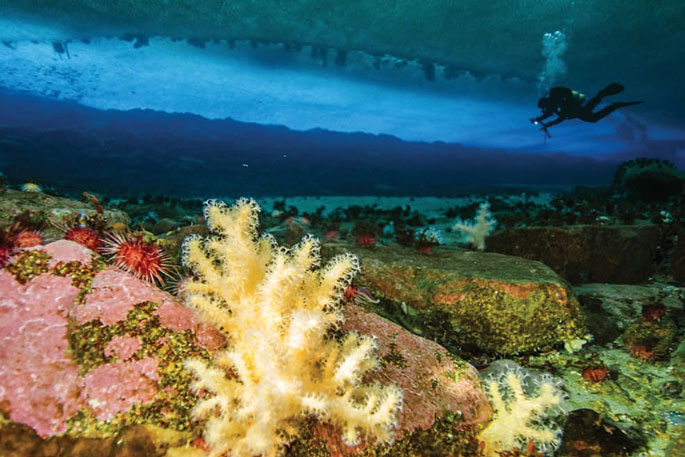 A diver under the ice in Antarctica, during a previous expedition. Photo: Niwa / Peter Marriott.
A diver under the ice in Antarctica, during a previous expedition. Photo: Niwa / Peter Marriott.Marine biologist Sadie Mills is aboard Tangaroa for the third time, leading a team focusing on collecting marine organisms.
She says the most exciting part of the trip was the unknown.
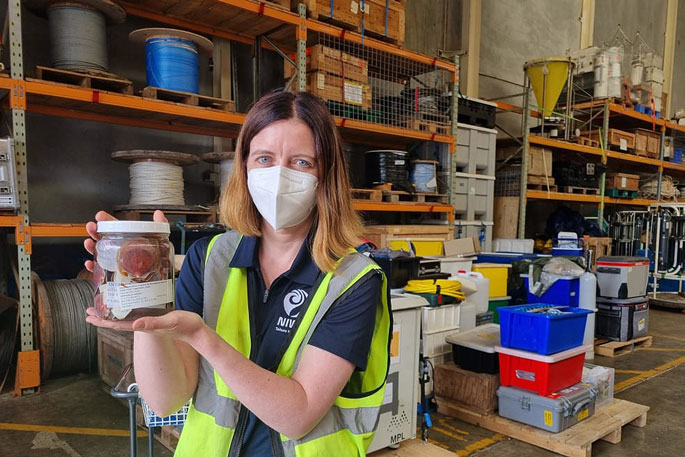 Sadie Mills with a sample of Antarctic scallops, collected on a previous voyage to the Ross Sea. Photo: RNZ / Lauren Crimp.
Sadie Mills with a sample of Antarctic scallops, collected on a previous voyage to the Ross Sea. Photo: RNZ / Lauren Crimp."For me, it's always what might we discover.
"We're taking an Italian remotely operated vehicle with us, which is also really exciting, because it means you can get up close and look at some of the details of these animals living on the sea floor."
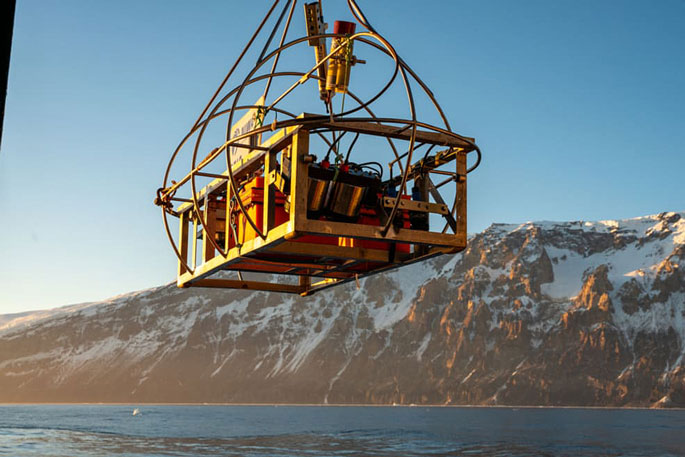 The crew prepares the DTIS for launch just off the coast of Cape Adare in Antarctica during the 2021 visit. Photo: Supplied / Stuart Mackay.
The crew prepares the DTIS for launch just off the coast of Cape Adare in Antarctica during the 2021 visit. Photo: Supplied / Stuart Mackay.That vehicle travels the sea floor collecting samples, controlled by the researchers on deck much like a video game.
"Animal and plant collections give us a library of the Earth's biodiversity, providing a valuable resource for research," says Mills.
"It's a crucial way to learn about the kind of amazing life these environments contain, so we can aid their protection and help them to thrive."
Other research focuses included mapping ocean currents, underwater video surveys, climate and atmospheric process sampling, and measuring fish and marine mammal distribution and abundance.
The New Zealand government is footing most of the multi-million dollar bill for the trip, with the Antarctic Science Platform and other international research partners also pitching in.
The 38-strong group on Tangaroa includes researchers, vessel crew, engineers, an ice pilot, a ship doctor, a cook and a steward.
Tangaroa leaves Wellington on Sunday after a precautionary Covid-19 isolation period. It will return to New Zealand shores at the end of February.

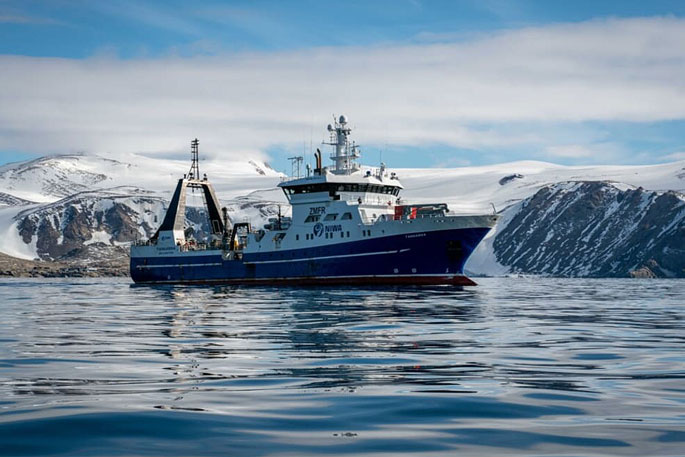

0 comments
Leave a Comment
You must be logged in to make a comment.